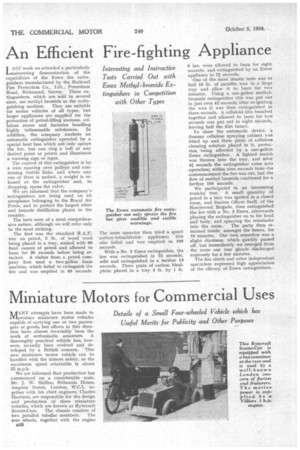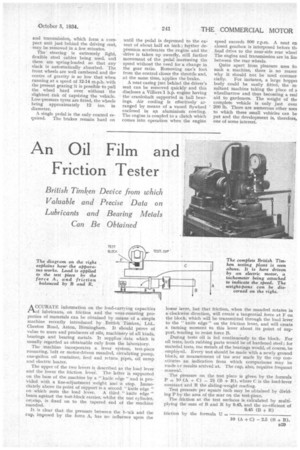Miniature Motors for Commercial Uses
Page 46

Page 47

If you've noticed an error in this article please click here to report it so we can fix it.
Details of a Small Four-wheeled Vehicle which has Useful Merits for Publicity and Other Purposes
MANY attempts have been made to produce miniature motor vehicles capable of carrying one or two passengers or goods, but efforts in this direction have almost invariably been the work of enthusiastic amateurs. A thoroughly practical vehicle has, however, recently been evolved and developed by a British concern. This new miniature motor vehicle can be handled with the utmost safety, as the maximum speed attainable is about 15 m.p.h.
We are informed that production has commenced on a considerable scale. Mr. J. W. Shillan, Britannia House, Ampton Street, London, W.C.1, together with his chief engineer, Charles Harrison, are responsible for the design and production of these miniature vehicles, which are known as Rytecraft
Scoota-Cars. The chassis consists of two paralled tubular members. The rear wheels, together with the engine
and transmis.sion, which form a compact unit just behind the driving seat, may be removed in a few minutes.
The steering is extremely light, flexible steel cables being used, and these are spring-loaded so that any slack is automatically absorbed. The front wheels are well cambered, and the centre of gravity is so low that when running at a speed of 12-14 m.p.h. with the present gearing it is possible to pull the wheel hard over without the slightest risk of capsizing the vehicle. Low-pressure tyres are fitted, the wheels being approximately 12 ins, in diameter.
A single pedal is the only control required. The brakes remain hard on until the pedal is depressed to the extent of about half an inch; further depression accelerates the engine and the drive is taken up sweedy, still further movement of the pedal increasing the speed without the need for a change in the gear ratio. Removing one's foot from the control closes the throttle and, at the same time, applies the brake.
A neat casing just behind the driver's seat can be removed quickly and this discloses a Villiers 1 h.p. engine having the crankshaft supported in ball bearings. Air cooling is effectively arranged by means of a vaned flywheel enclosed in an aluminium cowling. The engine is coupled to a clutch which comes into operation when the engine
speed exceeds 800 r.p.m. A neat en closed gearbox is interposed before de final drive to the near-side rear wheel The engine and transmission are in lim between the rear wheels.
Quite apart from pleasure uses foi such a machine, there is no rea.sor why it should not be used commer cially. For instance, a large hoppei body could be easily fitted, the re• sultant machine taking the place of a Wheelbarrow and thus becoming a real aid to gardeners. The weight of the complete vehicle is only just over 200 lb. There are numerous other uses to which these small vehicles can be put and the development is, therefore, one of some interest.




































































































